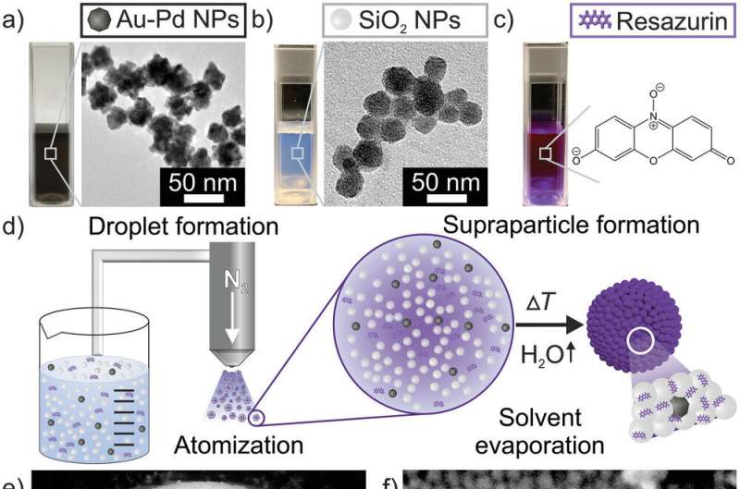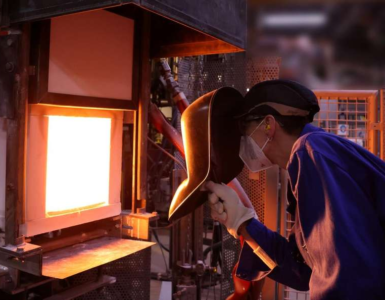Researchers develop a sensor to make hydrogen visible.
Researchers at the Department of Chemistry and Pharmacy and the Chair of Thermal Process Technology at Friedrich–Alexander University (FAU) have succeeded in making invisible hydrogen gas visible to the naked eye in order to prevent the risk of fires and explosions.
The key to their research is supraparticles, tiny particles that change color as soon as they come near hydrogen. The results have been published in the journal Advanced Functional Materials.
In the future, it is hoped that “green” hydrogen produced using renewable energy will become a key component of a sustainable and climate-friendly energy economy. Although we can neither see nor smell hydrogen gas, it is highly flammable and extremely explosive when it comes into contact with air.
🔥 What about we co-host a webinar? Let's educate, captivate, and convert the hydrogen economy!
Hydrogen Central is the global go-to online magazine for the hydrogen economy, we can help you host impactful webinars that become a global reference on your topic and are an evergreen source of leads. Click here to request more details
Historical events such as the explosion of the Hindenburg Zeppelin and recently, the explosion of a hydrogen refueling station in Norway, show just how important safety precautions are if we are to establish a sustainable and safe hydrogen economy.
In order to increase safety when handling hydrogen, researchers at FAU have explored the fundamental function mechanisms required for an innovative hydrogen sensor, based on a concept developed at the Fraunhofer Institute for Silicate Research ISC in Würzburg.
The following researchers were involved in the project: Prof. Dr. Karl Mandel, Professorship of Inorganic Chemistry; Prof. Dr. Jörg Libuda and Dr. Tanja Bauer, Chair of Interface Research and Catalysis; Prof. Dr. Dirk Zahn, Professorship of Theoretical Chemistry; Prof. Dr. Matthias Thommes, Chair of Thermal Process Technology; and Prof. Dr. Andreas Görling, Chair of Theoretical Chemistry.
Hydrogen sensors can successfully recognize even low concentrations of the gas, for example, if there is a leak in the pipeline. The innovative hydrogen sensor designed by the FAU researchers consists of tiny particles, known as supraparticles, and can make hydrogen gas visible to the naked eye without electricity or complex equipment.
The supraparticles are between one and ten micrometers in size; one micrometer is equivalent to one thousandth of a millimeter, and incorporate the violet-colored indicator dye resazurin. When they come into contact with hydrogen, the molecules in the dye react and visibly change color in two different stages.
If the sensor turns pink, hydrogen has leaked once. If hydrogen is still leaking, and the sensor is in contact with large quantities of hydrogen, it turns colorless. The immediate reaction makes leaks visible and allows them to be found in real time.
A further advantage of the innovative hydrogen sensor is its small size, which makes it suitable for use in a number of different scenarios, such as for coating pipelines. Thanks for staying up to date with Hydrogen Central.
Simon Schötz, the lead authors of the publication research associate at ECRC and Jakob Reichstein, research associate at Mandel group, said:
The insight we have gained into the workings of the new particle system will allow us to continue to optimize the supraparticles until we can realize their full potential, implement them in real-life applications and make a contribution to a safer hydrogen economy.
READ the latest news shaping the hydrogen market at Hydrogen Central
Researchers develop a sensor to make hydrogen visible, March 17, 2022








